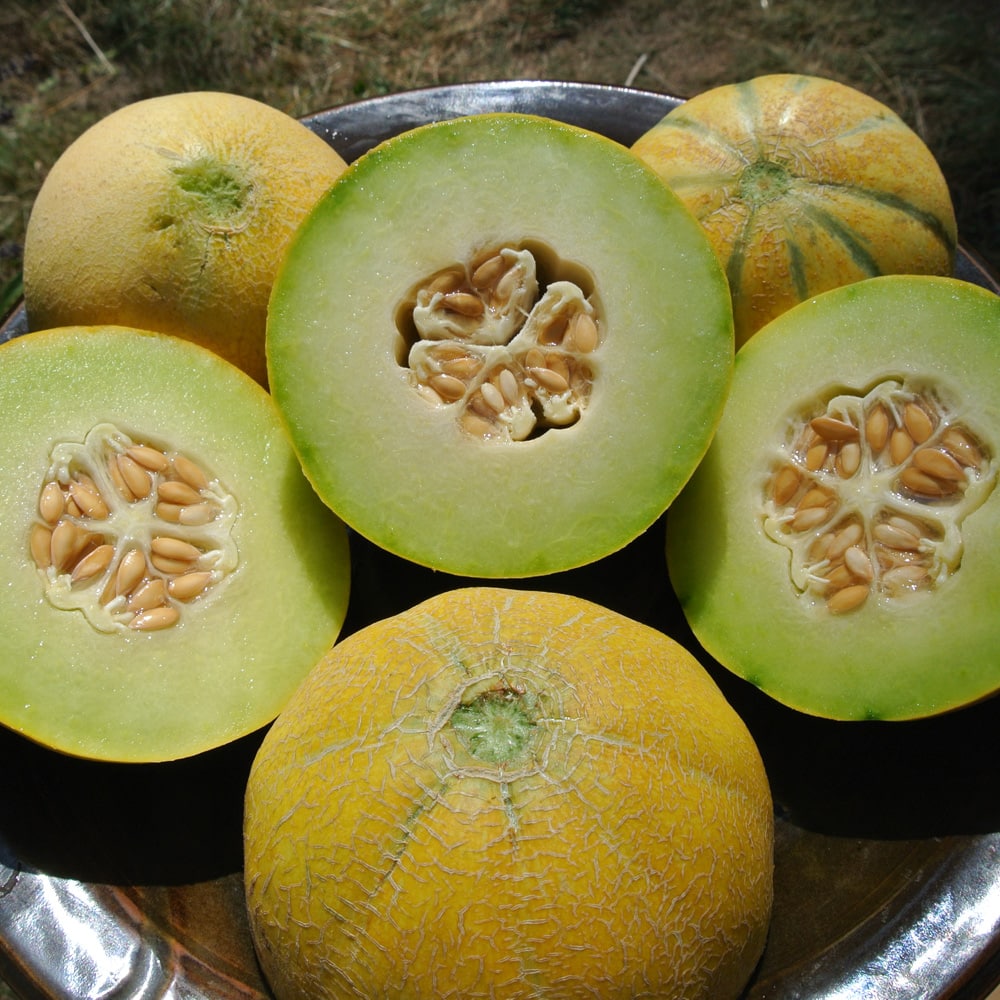Melon, Farthest North Galia (Organic)
Cucumis melo. 65 days.
Our selection from the Farthest North Mix that has been in the making since we crossed Galia F1 into the mix over 9 years ago. Still a genepool mix that has been selected for small, round, green-fleshed melons. Our goal is to breed a small fruited super early, super sweet galia/passport/tropical type melon. The color and size are mostly stable so far, however the rind style and flavor profile is still variable. Some taste a lot like the galia-type and some still have a charentais-like flavor, which is also good. A modern landrace that can still be selected by all you seed savers to create many new varieties. This most recent selection included collaboration with chef Tiffany Norton of Party Downtown in Eugene, Oregon, as part of the Culinary Breeding Network. Here’s to open source genetics!
| Geographical Origin |
|---|
Sow indoors in 2-4” pots with good potting soil mid-May through mid-June. Transplant into the garden with 2’ centers one week after sprouting. May also be direct sown when soil is warm. Melons are frost-sensitive and benefit from row cover. Protect from birds while sprouting and from insects when plants are young.
Save Seed
To save seed, scoop out seeds when you eat the fruit. Rinse off and dry seeds. For seed purity, isolate from other C. melo by ½ mile.





Bethany Dasko (verified owner) –
Where did you grow this variety? Washington
I’ve literally never been successful growing melons ever before. I live in zone 5b and just have always struggled. I got these guys, started them about 3 weeks before I planted them out, which was in early June, and by mid August I was harvesting the most adorable apple-sized little melons. the plants are loaded with them.
The description says they are small but – these are SMALL small. Like, my kid will eat several of them as a snack. I was expecting something maybe in the 2-3lb range. But they are tasty – not the MOST tasty I’ve ever had but I’m also a noob at melon growing so I’m not gonna blame these guys for that. Flesh is green and flavor is kinda like a cross between honeydew and cantaloupe.
I love these things and will continue to grow them in the future. These would be super fun at a get-together, sliced into wedges, and like I said they are the size of an apple so they are a great snack size.
Upvote if this was helpful (1) Downvote if this was not helpful (0) Watch Unwatch Flag for removal
Diane Cowles (verified owner) –
Where did you grow this variety? Washington
I live in the western Washington rainforest and have been told we can’t grow melons here. These melons grew faster than the other melons that I was trying and starting ripening in August. Now September, they are ripening like crazy. The melon smells is excellent and perfumes the entire room of the house where it waits to be eaten, but the delicious taste is even better.
I like how these melons tell you when they are ripe, unlike many other melons when you can’t tell if they are ripe or not. The Farthest North Galia grow as a green melon, then you can notice cantaloupe ribbing on them, next it turns yellow right away and it is ripe. You pick up the melon and the vine breaks away very easily leaving you with a tasty little melon in your hand. I will definitely grow this melon again and tell all my gardening friends that here is melon that can grow in the rain forest.
Upvote if this was helpful (1) Downvote if this was not helpful (0) Watch Unwatch Flag for removal